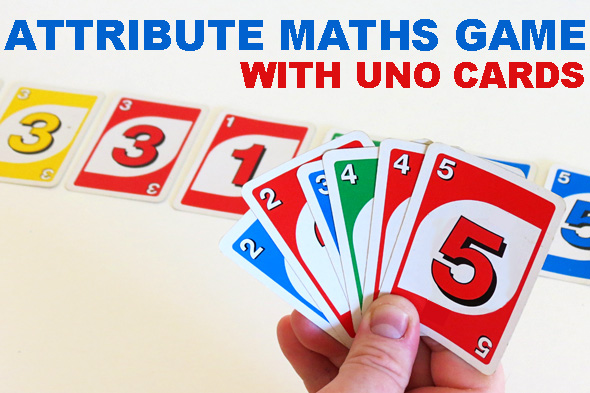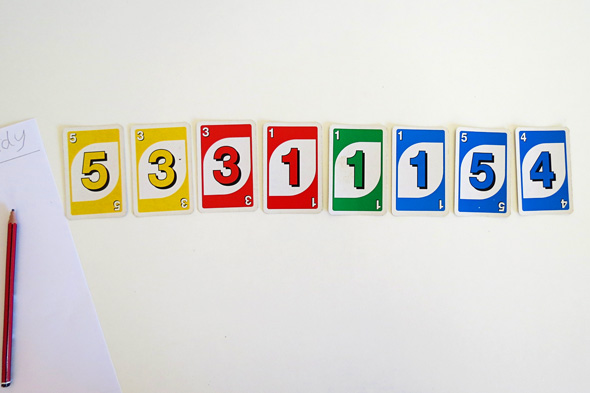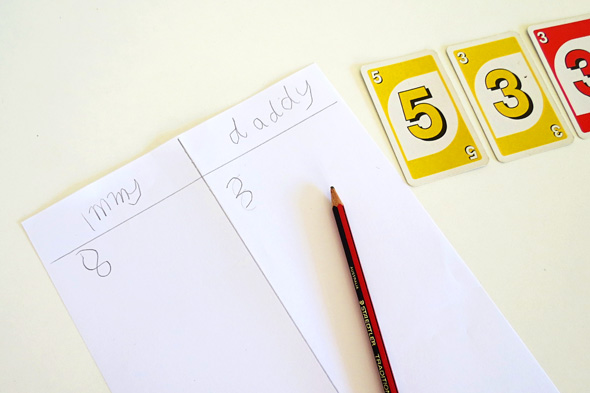Math Games: Learning About Attributes with Uno Cards
Learning about attributes – the characteristics used to describe an object – is important to the development of early mathematical skills. This maths game is a great way to get children thinking and talking about attributes related to number, colour and patterns. As they play children not only describe what they see but also compare and discuss the similarities and differences between the cards they are playing with.
Attribute Learning with Uno Cards
You will need:
- A pack of Uno cards – you will not use all of the cards in the pack, see more details below
- A paper and pencil for keeping score
Recommended age: 4+ (with modification for younger players)
Number of players: 2-4
To play:
1. Separate out the coloured number cards from the other ‘action’ cards from the Uno game. You will need one of each number (0-9) in each of the four colours to form the playing deck. For younger children, you might only start with some of the numbers, especially as they get used to the game but this will also depend on the number of players – the more players the more cards you will need. As an example, with Immy and one other player, we have started out playing with the numbers 1-5 and once she was familiar with the game extended the cards to include the numbers 1-8.
2. Shuffle the deck and deal the cards evenly between the number of players.
3. Decide who will go first. That person selects a card from his/her hand and places it face up to the left hand side of the play space. The next player selects and places down a card that has just one attribute different to the preceding card. In the example below you can see that the first card is a yellow 5. The next player played a yellow 3, keeping the same colour but choosing a different number. The next card played was a red 3 so this time the number remained the same, with the colour identified as the point of difference.
4. Play continues in this manner until one player is completely out of cards (the winner) OR when none of the players are able to play another card (we play the game so that if the other players are still able to go, play continues until no one is able to play any further cards). At this point you have a choice of how to continue;
– With younger players you might just finish the game with the winner being the person with the least amount/number of cards remaining in their hand.
– Alternatively, to help older children learn to be more strategic with the cards they choose to play, the player with the cards with the lowest value when the number values are added together is declared the winner.
– To extend the game (again for older players) record the value of the cards remaining in each player’s hand for each round of the game (see below). Once one player’s combined score reaches an agreed value – say 25 or 50 – the person with the lowest value is declared the winner.
Related Posts
- Maths Games for Kids: Teaching Tens & Ones
- Jump Into Learning: Active Activities for Phonics, Spelling, Maths & More
- Incorporating Numbers Into Everyday Life




Uno cards are such an awesome learning tool… must try this one with my kids! Thanks!
Thanks, Kate, Immy is really loving this game. I am pretty sure Morgan will too 🙂
Great idea! Pinning so we can play this when the kidlets are ready for it 🙂
Thanks, Danya 🙂
Thanks for posting this! Just played the easy version with my husband and 4 year old son and he won all 3 games. Love the extensions too!